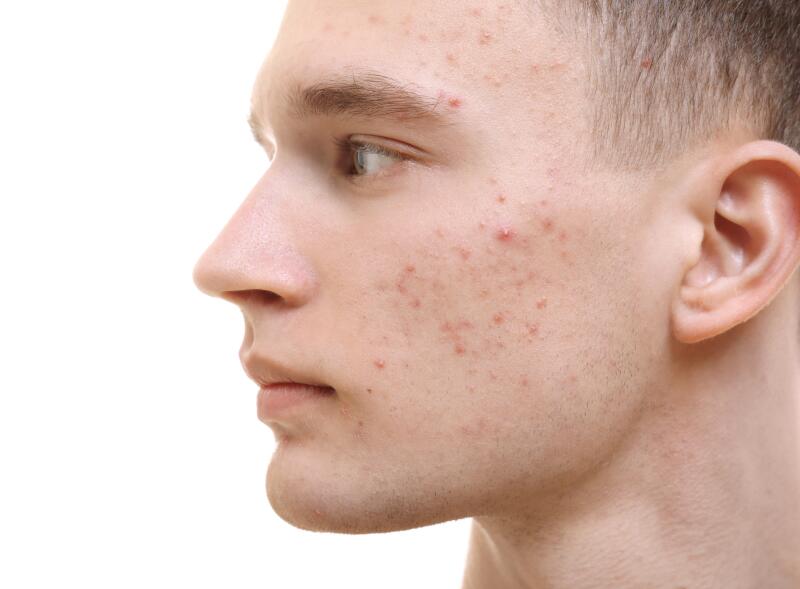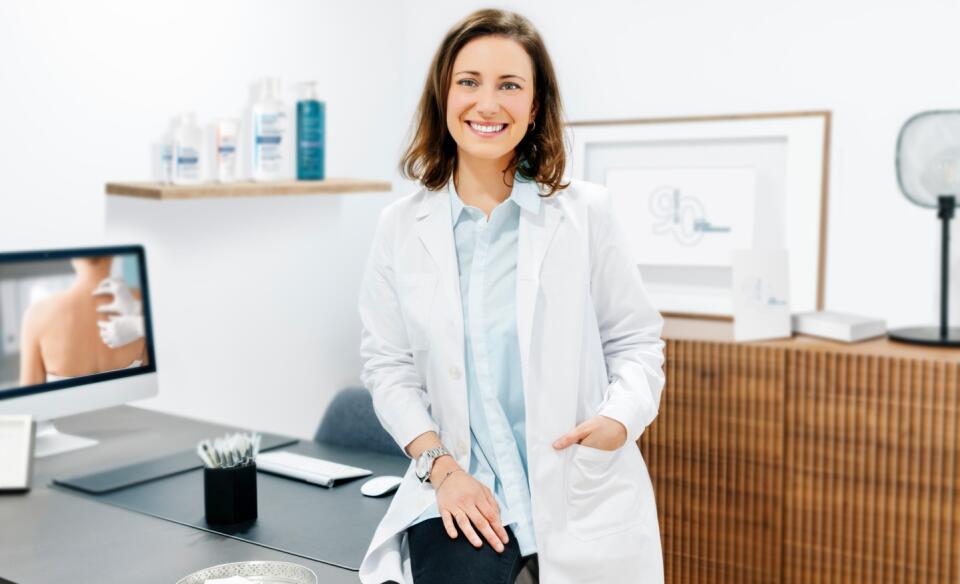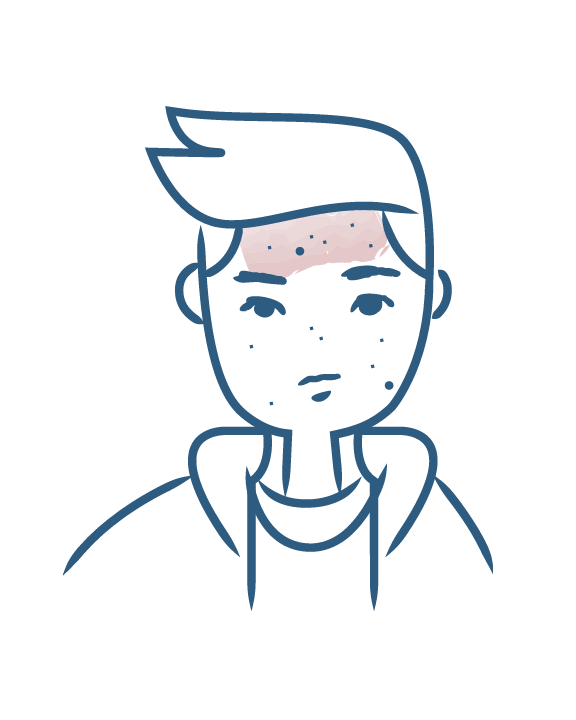-
Your concerns
Our articles to help you gain a better understanding
-
Our solutions
-
Ducray Dermatological laboratories
Our articles to help you gain a better understanding

The face is the part of the body most often affected by acne, in both teenagers and adults. Adult face spots often lead to issues of self-confidence, especially in the workplace.

Summary
On the face, acne signs vary greatly from one person to another, depending on the type of acne and the degree of severity: oily and shiny skin, dilated pores, blackheads, whiteheads, red spots. Teenagers and adults often fear face pustules, which are red spots with a white tip that are particularly unsightly. In severe to highly severe acne, the patient often has face nodules, i.e. inflammatory and painful spots measuring more than 5 mm.
All parts of the face can be affected by acne: the T-zone (forehead, nose, chin) is the main area affected but cheek acne, neck acne and mouth acne also occur. Adult face spots are often concentrated on the lower part of the face, especially in women.
Acne is a skin disease and more specifically a disease of the pilosebaceous follicles. The pilosebaceous follicles present on the face are made up of microscopic hairs associated with numerous and voluminous sebaceous glands. Sebum produced in large quantities clogs the pores, resulting in the first acne lesions, blackheads and whiteheads. These small spots can then develop into red and inflammatory spots.
Adult face spots have multiple origins: hormonal, drug or professional causes, as well as lifestyle. You should see a doctor to assess your personal situation.
Face acne is quite unsightly and most people who have it try to get rid of it. The doctor will prescribe a treatment for face spots, which will be either local or general, depending on the case. It is also important to wash the face with a mild cleanser, apply a cream adapted to the type of acne in question once or twice a day, and use an anti-acne mask once or twice a week. In the case of adult face spots, give preference to skin care products adapted to adult skin to also effectively combat the first signs of aging and residual marks. Avoid touching face acne spots and do not pierce them as this may lead to the superinfection of lesions and scars. Face spots in adults and teenagers can be camouflaged by suitable makeup rich in pigments.
Oily or acne-prone skin

Oily or acne-prone skin
NEWSLETTER
Dermatological expertise
To better understand your skin and hair, discover our exclusive content and innovative care products designed to improve your quality of life..